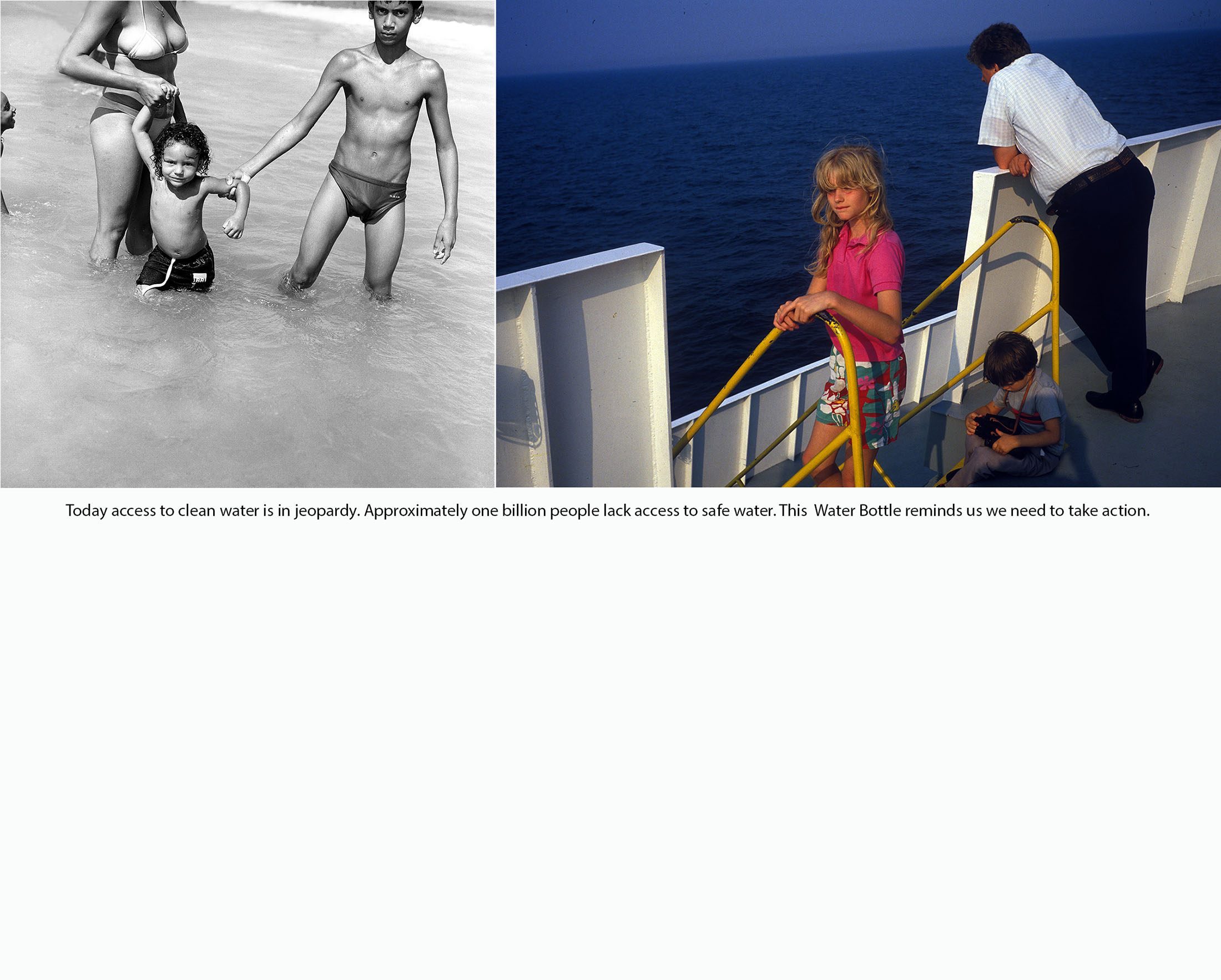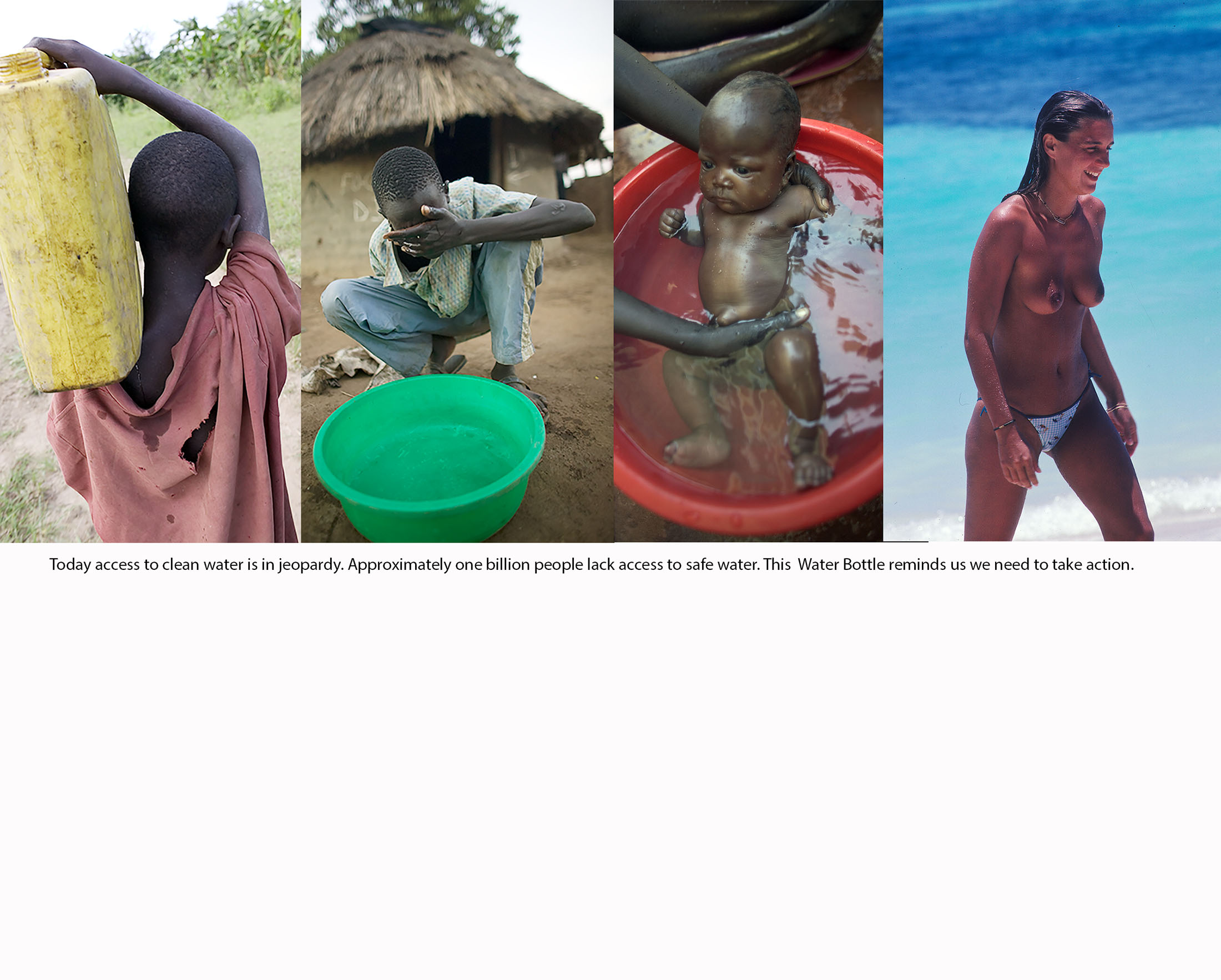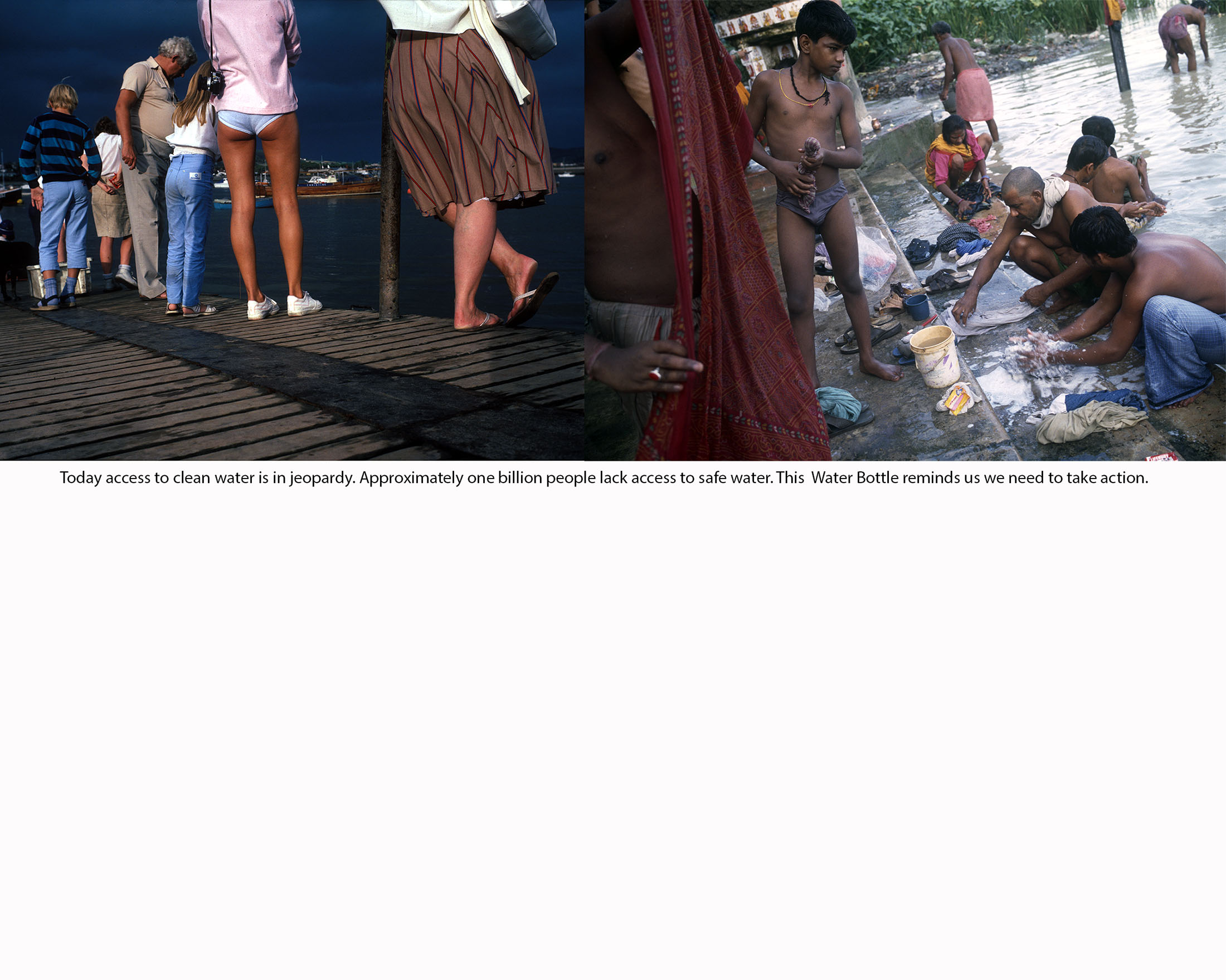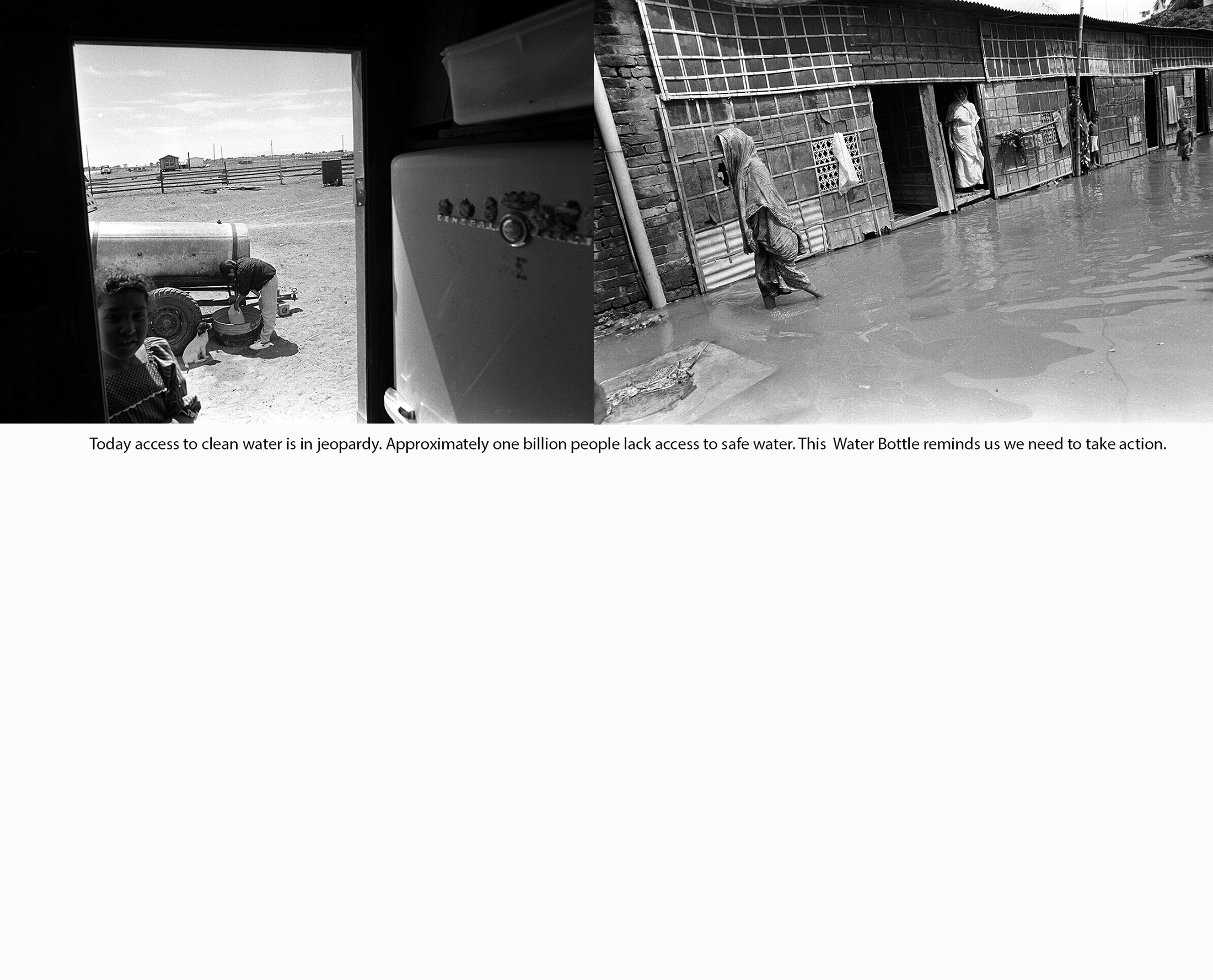Water Bottle Project
The idea of the Water Bottle Project is to create an art object that will remind us of the importance of water to our lives and the life of our planet. Labels featuring photographs of water use around the world on water bottles contrast images of water use with bottled water as an expensive commodity.
The labels show water in many forms. Water for drinking (from wells and faucets), water for swimming; water for bathing (in bathtubs and on the street), water as sacred (bathing in the Ganges, baptism); as well as, lack of water; too much water (monsoons); water for food (fishing); and contrasting favela (slum homes) built over water with beautiful resort beaches.
Without water we die—along with all land based pants and animals. Water is vital to theworld economy. Manufactured products and commodities such as oil are transported by boats. Water is used forcoolingand heating and in industry. Our food supply is dependent on water.
Today access to clean water is in jeopardy. As global warming continues, and demand for water begins to exceed supply, water will become the new oil—a scarce commodity that is a source of conflict and war. Today approximately one billion people lack access to safe water and over 2.5 billion lack access to adequatesanitation.
It will get worse. By 2025 more than half of thepeople of the world will face water vulnerability. By 2030, in some developing regions of the world, water supply will be only half of demand. US Defense Secretary Chuck Hagel told us in 2014, “Droughts and crop failures can leave millions of people without any lifeline, and trigger waves of mass migration.”Consider how destabilizing mass immigration from a few Middle East countries is in Europe. What will happen when half the people of our planet are at risk?
The Water Bottle Project creates an art object that reminds us we need to take action.















































